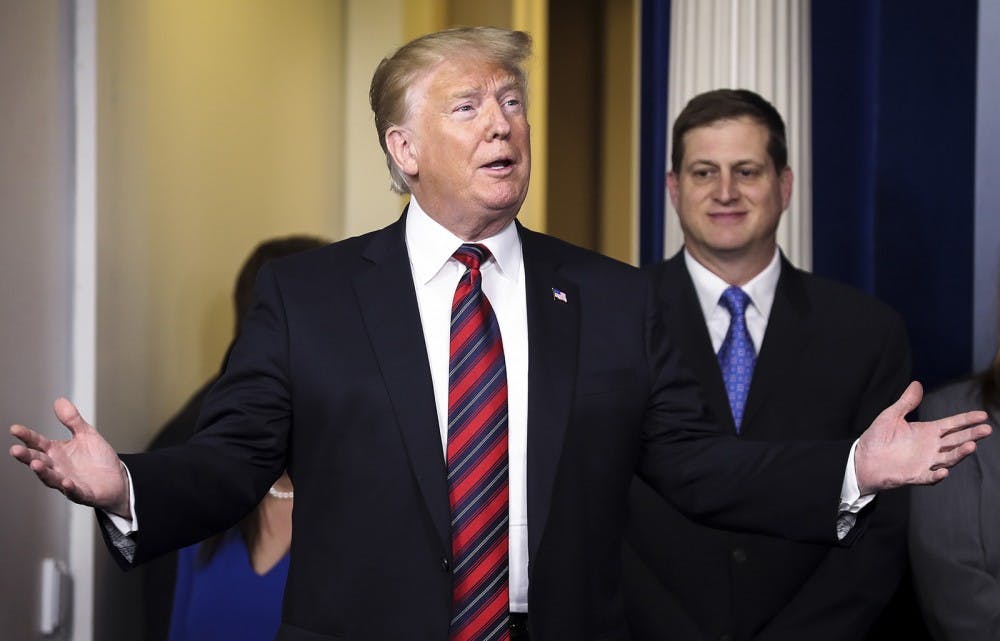Entering 2019, two Guatemalan children have died in United States custody at the southern border, and the government remains partially shutdown over the Trump administration’s request for enhanced border security in the form of a multibillion dollar wall.
Should Americans feel more secure knowing these Central American migrants were stopped from entering the country? After all, they could have been in a gang or trafficking drugs, right?
Border security, ICE operations and judgments by Immigration Review Courts have all increased under President Trump. These are critical components of his plan to keep Americans safe from migrants heading north.
Behind this increase in security and restrictions is a belief among President Trump and his supporters that these migrants carry with them disease and gang violence, and will plague the U.S. with it upon their arrival — unless they are stopped.
What this policy fails to recognize is the nuances of Central American immigration to the U.S. A border wall alongside mass deportation casts a broad net and hurts those migrants filling important jobs and working to become permanent residents and taxpayers.
Further, the Trump administration’s policies are poorly justified.
Take Mexican migrants for example. On an episode of Malcolm Gladwell’s podcast Revisionist History, he talks about a realization immigration officials had about the patterns of Mexican immigration. They found that when there were minimal restrictions on immigration by the U.S. government, the majority of migrants from Mexico returned there after a period of time, and periodically came back to work jobs that farmers in California rely on during harvest seasons.
It’s also clear that there’s no correlation between increased immigration and crime. According to the New York Times’ Upshot, since 1980 the immigrant population in the U.S. increased a whopping 118 percent, while the violent crime rate dropped 36 percent.
Since 1980, Bloomington’s immigrant population increased by 81 percent alongside a 17-percent decrease in its murder rate.
The power and strength of the gang the Trump administration cites as the basis for the increased immigration restrictions, MS-13, is also, whether on purpose or not, overstated.
According to a report by ProPublica, the gang has no central organization, no known leaders, is not a player in the international drug trade and its members mostly consist of teenage boys.
Moreover, these gangs are localized, do not coordinate with each other and are best understood as violent “cliques.” The Department of Justice based its increased immigration restrictions on the understanding that MS-13 has “tentacles” that stretch across Central America, the United States, Europe and “to within yards of the U.S. Capitol.”
No doubt many of the administration’s moves are perfectly legal. A border wall is expensive, but not unconstitutional. The only significant limit that a court has put on ICE deportation operations is ruling that local police cannot assist ICE agents in arresting immigrants.
As for asylum claims, the use of Immigration Review Courts by the Department of Justice has increased under President Trump. It should be noted, however, that the use of these Immigration Review Courts is not necessarily radical, but the implementation of a legal tool within the Justice Department for reviewing cases of removal and asylum that was not utilized during the the Obama administration.
However legal the Trump immigration policy is, it’s still rooted in a false premise of violence and fails to justify itself.
Is the U.S. safer after two Guatemalan children died at the border in Homeland Security’s custody? Were they MS-13 operatives?
The answer is no.
This leaves me to wonder whether these children died in part because of a policy based on treating them as violent people or less than human. If viewed with lessened hostility, might these kids have been given more water, a warmer room or better medical attention and ultimately not died?
There’s probably no way of knowing that, but it’s worth considering what steps the administration could have taken to avoid ending up with two dead migrant children in its custody.






